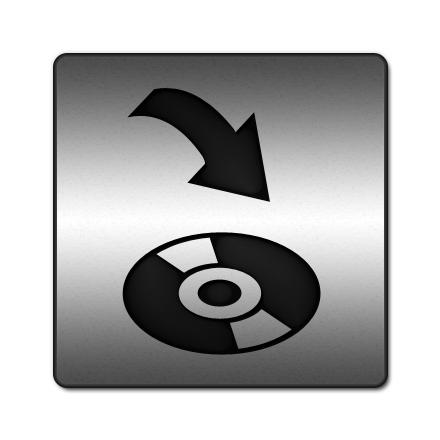-
Par DJDemonAngel le 14 Juillet 2010 à 16:45
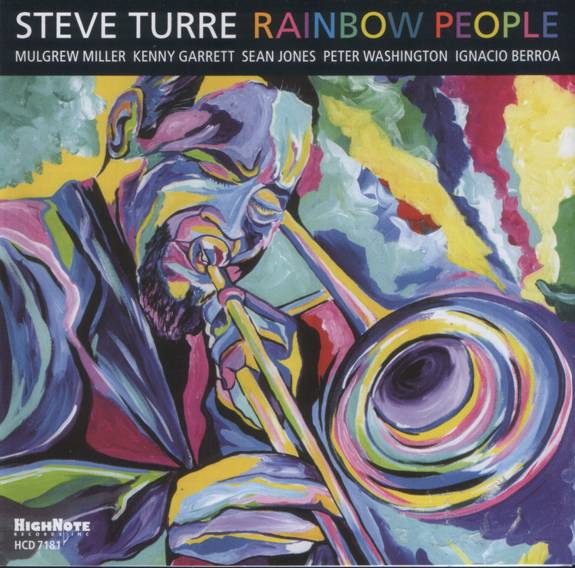
Note :





http://www.myspace.com/steveturre
From Rahsaan Roland Kirk to Ray Charles to Art Blakey, Dizzy Gillespie, McCoy Tyner and Tito Puente, Steve Turre's musical family is a rainbow of the highest order. Whether in the studio or
onstage, the trombonist always takes music to a righteous level. For this year's Rainbow People, Turre mixes it up with Kenny Garrett, Mulgrew Miller, Peter Washington, Ignacio Berroa, Sean Jones
and Pedro Martinez. The title track is just one of nine bright moments from one of 2008's best albums.
permalink
Origine du Groupe : North America
Style : Latin jazz
Sortie : 2008
Tracklist :
1. Rainbow People
2. Forward Vision
3. Brother Ray
4. Groove Blues
5. Midnight In Madrid
6. Cleopatra's Needle
7. Search For Peace
8. Segment
9. Par El Comandante
-
Par DJDemonAngel le 14 Juillet 2010 à 16:44

Note :





http://www.myspace.com/theofficialhoracesilverpa
http://fr.wikipedia.org/wiki/Horace_Silver
Avec son snobisme, ses codes, sa complexité, le jazz peut faire peur. Comment l’approcher ? Par quel artiste, par quel disque commencer pour appréhender le patrimoine pharaonique de cette musique
qui aura bientôt un siècle ? Evidemment, il y a le Kind of blue de Miles Davis, le jazz vocal à la Billie Holiday, les blues de Louis Armstrong et mille autres voies... Pour ma part, j’ai
tendance à croire que le hard-bop funky et latin de Song for my father constitue l’entrée en matière parfaite.
Découvert par Stan Getz, Horace Silver travaille dès ses premières années d’activité avec Miles, Coleman Hawkins, Lester Young et Milt Jackson. Du sérieux, donc. En 1953, il fonde les Jazz
Messengers avec Art Blakey, le batteur absolu. Durant cette période décisive, il façonne son style et incorpore au jazz le gospel et le RnB pour créer le hard-bop. Peu à peu, des éléments funky
se greffent à ce patchwork d’influences déjà bariolé, et le hard-bop se mue en soul jazz. Song for my father, avec le Sidewinder (1963) du trompettiste Lee Morgan, est le manifeste de cette
nouvelle ère placée sous l’égide du groove. Un disque facile d’accès, dansant et ouvertement hédoniste. Sur Blue Note, bien entendu.
Les breaks de batterie sont charnus, rebondissants. Le piano, percussif et virevoltant. Les cuivres papillonent sur des mélodies-friandises. A lui seul, le morceau éponyme suffit à tomber en
pâmoison : sur un thème catchy à mort, Joe Henderson glisse l’un des plus beaux solos de saxophone jamais enregistré. Indescriptible. Sur le délicat "Calcutta Cutie", c’est Silver qui échappe à
toute tentative d’analyse avec un solo bégayant et monkien percé d’éclaircies bluesy. L’ensemble est d’une rare cohérence, bien qu’issu de deux sessions différentes. Difficile de distinguer les
deux quintets mis à contribution, chacun s’épanchant dans une même joie solaire dont la sincérité ne peut être mise en doute. La coloration latine de la majorité des titres sonne comme une
exploration de ses racines par le pianiste puisque son père, John Tavares Silver, qui fume le cigare sur la pochette de l’album, était musicien au Cap Vert. L’année suivante, le fiston poursuivra
cette quête des origines et sortira un Cape Verdean Blues (1965) au nom explicite. Une nouvelle bombe. Mais ça, c’est une autre histoire...
En bref : groove latin rayonnant pour cette pierre angulaire du jazz funky.
par Des Oreilles Dans Babylone
permalink
Origine du Groupe : North America
Style : Jazz
Sortie : 1964
Tracklist :
1. Song For My Father
2. The Natives Are Restless Tonight
3. Calcutta Cutie
4. Que Pasa
5. The Kicker
6. Lonely Woman
7. Sanctimonious Man
8. Que Pasa (Trio Version)
9. Sighin' And Cryin'
10. Silver Threads Among My Soul
Tracks 1 – 5
Horace Silver — piano
Carmell Jones — trumpet
Joe Henderson — tenor saxophone
Teddy Smith — bass
Roger Humphries — drums
Tracks 6 – 10
Horace Silver — piano
Blue Mitchell — trumpet
Junior Cook — tenor saxophone
Eugene Taylor — bass
Roy Brooks — drums
-
Par DJDemonAngel le 14 Juillet 2010 à 16:24
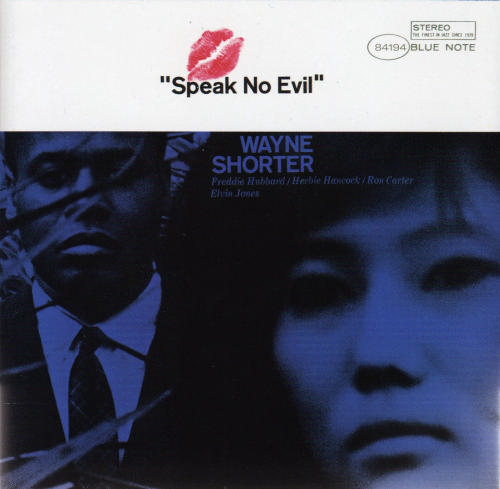
Note :





http://www.vervemusicgroup.com/wayneshorter
http://www.myspace.com/unofficialwayneshortertribute
Gamin, Wayne Shorter et son frère dévoraient les bd et les films de série B avec extra-terrestres, monstres, loup-garou, vampires et créatures de Frankenstein. Speak No Evil clôt l'année 1964, où
Wayne a participé à l'enregistrement de 20 disques dont 3 avec les Jazz Messenger, 9 avec Miles Davis, 3 avec Gil Evans, 1 avec Lee Morgan, 1 avec Grachan Moncur III et Night Dreamer puis Juju en
tant que leader. L'album s'inscrit dans la lignée bop, un bop avec un soupçon d'étrangeté - mais on en est pas encore au Weather Report - et Wayne Shorter précise : I was thinking of Misty
landscapes with wild flowers and strange, dimly-seen shapes-the kind of places where folklore and legend are born. And then I was thinking a thing like witchburnings, too*. La session
d'enregistrement du 24 décembre 1964 menée par Rudy Van Gelder parle de magie, de sorcière, de diable, de danse de cadavres et de fleurs sauvages ; 6 compositions de Wayne Shorter avec Freddie
Hubbard à la trompette, Herbie Hancock au piano, Ron Carter à la basse et Elvin Jones à la batterie. Dance Cadaverous est une composition un peu décalée, piano sophistiqué qui se promène du
côté du classique. Quelque chose d'étrange - comme dans les compositions de Monk - et de planant se glisse dans la mélodie vers le milieu du morceau, la rythmique est plutôt cool. Shorter dit à
propos du morceau : I was thinking of some of these doctor pictures in wich you see a classroom and they're getting ready to work on a cadaver*. On se penchera aussi avec bonheur sur le jeu
d'Herbie Hancock pour Infant Eyes, la balade, où le saxophone tenor de Wayne balance du velours. A l'instar de Witch Hunt qui ouvre l'album, le disque sonne de manière nonchalante, mais
faut pas s'y tromper, c'est du lourd que nous avons là. Des mélodies un peu bizaroïdes qui une fois rentrées dans la caboche risque fort de continuer à trotter.
*Notes extraites du livret de Don Heckman.
Origine du Groupe : North America
Style : Jazz
Sortie : 1964
Tracklist :
1. "Witch Hunt" 8:07
2. "Fee-Fi-Fo-Fum" 5:50
3. "Dance Cadaverous" 6:45
4. "Speak No Evil" 8:23
5. "Infant Eyes" 6:51
6. "Wild Flower" 6.00
7. "Dance Cadaverous" (alternate take) 6:35
-
Par DJDemonAngel le 20 Juin 2010 à 15:24

Note :





http://en.wikipedia.org/wiki/Terumasa_Hino
Terumasa Hino
Long considered a jazz legend and Japan’s foremost trumpeter, Terumasa Hino has played with almost all the jazz heavyweights throughout the past half century, from Gil Evans and Elvin Jones to
Herbie Hancock and Chick Corea. Born in Tokyo in 1942, Hino made his professional debut at the tender age of thirteen, drawing his main inspiration from Freddie Hubbard and Miles Davis.
For the first few years of his career, Hino was something of an opportunist, even jumping open Japan’s early ‘60s eleki bandwagon with the cash-in LP TRUMPET IN BLUEJEANS. However, his fiery
temperament and ‘large brilliant tone’, as The Grove Dictionary of Jazz termed it saw Hino’s late ‘60s work increase both in output and quality, and his 1969 Columbia LP HI-NOLOGY as The Terumasa
Hino Quintet was extremely successful commercially.
****
Fast, extremely energetic fusion jazz album (with the emphasis on jazz). Hino leaves no doubt that he is indebted to Miles Davis; one of the tracks is titled "Like Miles" (and sounds very much
like Miles). And yet, Hino is no Miles clone. In fact, on this 1969 recording Hino ventures into realms that Miles hadn't really visited yet. After Filles de Kilimanjaro, Miles' records were
assembled in the studio from snippets, and his live recordings were mostly extended jams of large ensembles. Hi-Nology is much more straightforward and concrete. Whereas Miles became interested
in texture, Hino, despite the fusion idiom, also keeps a footing in hard bop. Therefore, songs are never abandoned for patterns, and when the solos deconstruct a theme, they will always
eventually piece it together again. If Freddie Hubbard hadn't gone all gooky in the late 1960s, you could image him playing like this.
A very interesting album, much recommended.
And the cover is way beyond cool.
PS. This is the ORIGINAL 1985 CD release. The bonus tracks on the 2005 reissue are best ignored. They lack the electricity, wild energy and funky rhythm of the other tracks and instead present
somewhat clichéd melody lines. They also completely subvert the mood of the album.
By postman99
permalink
Origine du Groupe : Japan
Style : Jazz World , Jazz Fusion
Sortie : 1969
Tracklist :
1. Like Miles 9'54"
2. Electric Zoo 12'30"
3. Hi-Nology 14'29"
4. Dupe 7'02"
-
Par DJDemonAngel le 8 Juin 2010 à 16:03

Note :




Origine du Groupe : North America
Style : Jazz
Sortie : 1970
Tracklist :
01. Archway Theme
02. The Golden Striker
03. It Never Entered My Mind
04. Oliphant Gesang
05. Indonesia
06. Sounds At The Archway
07. Step Da Co Eel Waltz
08. Ed’s Blues
From Wikipedia :
Eddie Harris (October 20, 1934 – November 5, 1996) was an American jazz musician, best known for playing tenor saxophone and for introducing the electrically amplified saxophone. He was also fluent on the electric piano and organ. His best-known compositions are "Freedom Jazz Dance", recorded and popularized by Miles Davis in the 1960s [1] and "Listen Here". He also invented the saxobone.
-
Par DJDemonAngel le 1 Juin 2010 à 11:35
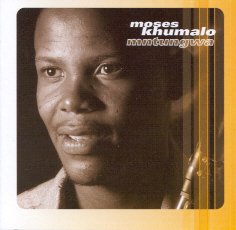
Notes :


 +
+Origine du Groupe : South Africa
Style : Jazz World , Smooth Jazz
Sortie : 2002
Tracklist :
01 - Ngwana Wa Mme
02 - Hymn for Taiwa
03 - He Said
04 - Township Tempo
05 - Celebrate Mzansi
06 - African Mood
07 - Song for Leonard
08 - Vat My Huis Toe
09 - Kgotso Africa
10 - MntungwaFrom wikipedia :
Moses Khumalo (born Soweto January 30, 1979 — died September 4, 2006) was a South African jazz saxophonist. He studied at Manu Technical College from 1994-1998 after graduating from community college. He started with the piano but switched to the saxophone in February, 1995.
He first performed publicly at the Grahamstown National Arts Festival in 1995, and gained attention in the jazz world as a member of Moses Taiwa Molelekwa's band. In the following years he played with Hugh Masekela, Sibongile Khumalo, and Paul Hanmer. Khumalo had been dubbed "one of South Africa's most promising young saxophonists."[1]
Moses Khumalo died of an apparent suicide by hanging on September 4, 2006.
-
Par DJDemonAngel le 21 Avril 2010 à 20:00

Note :




Sortie : 2009
Style : Jazz
Tracklist :
01 - Wistful Thinking (Ralph Towner) 04:19
02 - Punta Giara (Ralph Towner) 06:21
03 - Chiaroscuro (Ralph Towner) 06:31
04 - Sacred Place (Ralph Towner) 04:13
05 - Blue In Green (Miles Davis) 05:45
06 - Doubled Up (Ralph Towner) 04:56
07 - Zephyr (Ralph Towner) 07:29
08 - Sacred Place (reprise) (Ralph Towner) 01:59
09 - Two Miniatures (Ralph Towner, Paolo Fresu) 02:38
10 - Postlude (Ralph Towner, Paolo Fresu) 02:31Ralph Towner est né en 1940 à Chehalis, dans l'état de Washington. Ralph Towner a grandi dans l'état de l'Oregon, élevé par des parents musiciens (sa mère était professeur de piano). Il a étudié la composition classique à l'université de l'Oregon et en sort diplômé en 1963. Il part ensuite un an en Autriche étudier la guitare classique et revient à l'université de l'Oregon étudier la composition. Il s'installe en 1968 à New York en tant que guitariste/compositeur pour y faire carrière.
En 1970 il participe à la création du groupe Oregon avec Paul McCandless, Glen Moore, and Collin Walcott. Original par l'instrumentation, le groupe se démarque aussi par son mélange de la musique traditionnelle indienne avec le jazz avant-garde, et enregistre des albums qui auront beaucoup d'influence et une certaine popularité. Les années 70 marquent aussi le début de sa collaboration avec le label ECM, chez qui il a enregistré la quasi-totalité de ses disques en tant que leader.
Ralph Towner n'utilise jamais d'amplification, utilisant seulement la guitare classique 6 cordes (nylon) et de façon très régulière une guitare 12 cordes (métal). De fait ses groupes sont constitués généralement d'un petit nombre de musiciens acoustiques, mettant l'accent sur la dynamique et l'interaction entre les musiciens plutôt que sur le volume sonore.
Il se consacre aussi beaucoup à la composition, œuvres pour orchestre principalement mais aussi sonate pour piano ou musiques de film.
Depuis qu’il est sorti diplômé du conservatoire de Cagliari en 1984, Paolo Fresu (né en 1961) a joué sur plus de 300 albums. Ses albums en leader ont obtenu de nombreuses récompenses internationales — comme par exemple en France le « Django d’or » de meilleur musicien européen en 1996. Il a collaboré avec un grand nombre de musiciens italiens et internationaux parmi lesquels Enrico Rava, Antonello Salis, Enrico Pieranunzi, Giorgio Gaslini, Gianluigi Trovesi, ,John Taylor, Kenny Wheeler, Palle Danielsson, Jon Christensen, Gerry Mulligan, David Liebman, Dave Holland, Richard Beirach, John Zorn, John Abercrombie, Helen Merril, Richard Galliano, Michel Portal, Trilok Gurtu, Jeanne Lee, Gunther Schüller, Paul McCandless, Jim Hall, Lew Soloff, Uri Caine, Gil Evans, Toots Thielemans... Il est par ailleurs régulièrement invité comme soliste par de grandes formations comme le Grande Orchestra Italiana, l’ONJ, le NDR Big Band et l’Instabile Orchestra.
-
Par DJDemonAngel le 7 Avril 2010 à 13:39
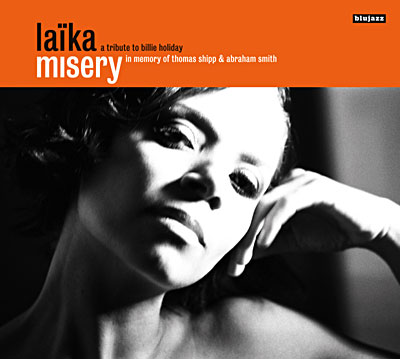
Note :





http://www.myspace.com/laikajazz
Sortie : 2008
Style : Jazz
Tracklist :
1 Strange Fruit 5:12
2 Lady's Back In Town 4:15
3 Don't Explain 3:07
4 You Can't Lose A Broken Heart 3:18
5 What's New 2:07
6 All Of You 3:39
7 How Deep Is The Ocean 4:39
8 Lover Come Back To Me 4:39
9 Misery 4:38
10 You Turned The Tables On Me 4:55
11 Gloomy Sunday 5:12
12 Left Alone 5:21

tribute to Billie Holiday - in memory of Thomas Shipp and Abraham Smith.
La chanteuse et comédienne Laïka Fatiendébute sa carrière de leader en 2004 avec la sortie de son premier album Look at Me Now… Encensé par les médias et plébiscité par le public dès sa parution, Look at Me Now annonce une carrière très prometteuse… C´était sans compter sur la discrétion de cette chanteuse qui aime mûrir les choses et prendre son temps… Résultat, il nous aura fallu attendre quatre ans et cette année 2008 afin de pouvoir redécouvrir cette magnifique voix, et ce grâce à la sortie de son nouvel album intitulé Misery, hommage à la légendaire Billie Holiday.
Enregistré en février 2008 à Paris, Miserybénéficie d´un lineup de musiciens exceptionnels liant tradition et modernité afin de porter ce très beau projet. Outre une sélection très personnelle de chansons et des arrangements très originaux,la voix de Laïka nous envoûte par sa sensualité, son ampleur,son sens du texte et de la musique.
Avec Misery, C´est une artiste confirmée qui nous revient, une artiste dont le succès ne fait plus aucun doute. Confirmation !
-
Par DJDemonAngel le 22 Mars 2010 à 17:49
 Note :
Note : 




http://www.myspace.com/jamaaladeentacuma
http://theroots.com
http://www.myspace.com/theroots
Sortie : 1998
Style : Rap Fuion , Groove , Jazz
Tracklist :
1 Relax
2 Hollers Of The Horn
3 Can You Feel It
4 OTS (On The Spot)
5 Clique
6 In The Mood For Groove
7 Dead Love
8 Hippest
9 Da Jazz Pizazz
10 It's Out Of Control
11 Phat Back Bass
12 Comin' Home Baby
13 Relax (jazzy jeep jaunt)
14 Relax (instrumental)

Few musicians leave their audiences with a feeling that they have truly witnessed something amazing. Artist/Producer/Performer/Arranger AND Bassist - JAMAALADEEN TACUMA does just that. This native Philadelphian has always stretched the old mold of what and how a bassist is supposed to play. Tacuma has simply re-defined his instruments artistic potential. In the mid 70’s, his creatively free approach to the bass caught the eye and ear of the legendary saxophonist Ornette Coleman. Tacuma became a member of Coleman's electric band, Prime Time; he toured with the group and played on some of Coleman's historic recordings such as: "Dancing In Your Head", "Body Meta", and "Of Human Feelings". As a soloist, Tacuma continued to press the musical envelope with his debut album in 1983 entitled simply, "Showstopper". Several records followed, some of which include: Renaissance Man (1984), Music World (1987) and JukeBox (1989), which confirmed his ability to flip between various musical genres. Even the critics have had high praise for Tacuma’s musicianship and artistry. In 1981, he received the highest number of votes ever for an electric bassist in the ‘Talent Deserving Wider Recognition" category of the Down Beat critics' poll. Tacuma has performed and recorded with musicians on nearly every continent. He has recently completed a powerful project with Turkish percussionist Burhan Ocal. The CD is entitled "GrooveAlla Turca" and it features traditional Turkish instrumentalists with American Jazz/Funk musicians. Furthermore, the release "Mirakles" by Derrick Bailey, G. Calvin Weston & Tacuma was cited as one of the "most important recordings of year 2000" by All Music Guide. He also recently completed a recording entitled "DUST" with BAUHAUS member Peter Murphy on the Metropolis label. Tacuma has collaborated with a diverse and talented roster of artist: poets Jayne Cortez, Quincy Troupe and Amiri Baraka and guitarists Jeff Beck and James Blood Ulmer. He has worked with orchestras led by Anthony Davis at Carnegie Hall, to recording and performing with rap group The Roots. He has recorded with saxophonist Wolfgang Puschnig and Grover Washington Jr., and recently collaborated with James Carter, in which Tacuma played and wrote material for the CD "Layin In The Cut". Tacuma is currently working with the great comedian and philanthropist Bill Cosby on several projects and has even written music for the hit TV show, "The Cosby Show". Staying true to his artistic and experimental approach to music, Tacuma is currently producing projects for his newly formed "Crash Pad Productions" so stay tuned.
permalink
-
Par DJDemonAngel le 4 Mars 2010 à 14:23
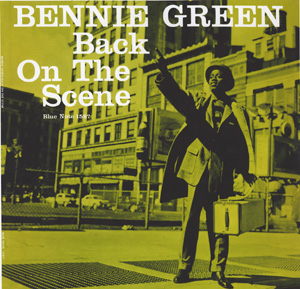 Note :
Note :



http://en.wikipedia.org/wiki/Bennie_Green
Sortie :1958
Style : Jazz
Tracklist :
1. I Love You - 6:08
2. Melba's Mood - 5:35
3. Just Friends - 7:03
4. You're Mine, You - 5:18
5. Bennie Plays The Blues - 8:25
6. Green Street - 5:09
LINEUP: Bennie Green (trombone), Charlie Rouse (tenor sax), Joe Knight (piano), George Tucker (bass), Louis Hayes (drums)

It's evident from the opening pair of Latin-flavored performances that Back on the Scene is one of Bennie Green's most diverse efforts. Green's warm, supple tone and fondness for swinging, bop-influenced mainstream jazz and jump blues hasn't disappeared; he's just found new facets in his style. The infectious Latin rhythms on Cole Porter's "I Love You" and "Melba's Mood" are welcome, as is "You're Mine You," which showcases Green's sensitive ballad style. Reviving the standard "Just Friends" emphasizes the trombonist's ties to big band and bop, particularly through tenor saxophonist Charlie Rouse's strong solos. The jumping "Bennie Plays the Blues" and "Green Street" are also terrific, finding Green, Rouse and pianist Joe Knight trading full-bodied solos. Even with this vast array of styles, Back on the Scene retains all the good-natured spirit and humor of his earlier Prestige albums.
~ Stephen Thomas Erlewine
permalink Suivre le flux RSS des articles de cette rubrique
Suivre le flux RSS des articles de cette rubrique
Music Lover

